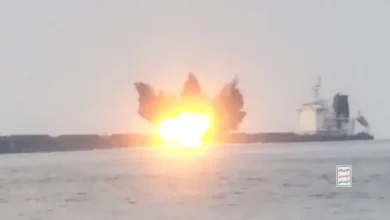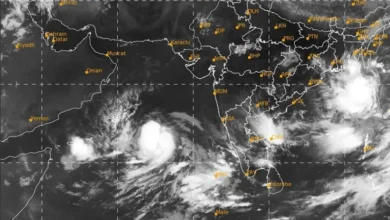Russian Tu-95MS fly over Bering Sea, US tracks the aircraft operating in Alaska ADIZ

The North American Aerospace Defense Command (NORAD) detected and tracked four Russian military aircraft operating in the Alaska Air Defense Identification Zone (ADIZ), it said on Tuesday.
The Russian Ministry of Defense said that two Tu-95MS strategic missile carriers flew over the neutral waters of the Bering Sea near the western coast of Alaska, accompanied by Su-30SM and Su-35S aircraft of the Air Force.
It added that the two missile carriers “performed a planned flight in the airspace over the neutral waters of the Bering Sea, near the western coast of Alaska,” adding: “The flight duration was more than 13 hours. Fighter escort was provided by the crews of the Su-30SM and Su-35S aircraft of the Air Force formation and air defense of the Eastern Military District.”
The Tupolev Tu-95MS, also known as “Bear” by NATO, is a large, four-engine turboprop-powered strategic bomber and missile platform. It is one of Russia’s primary long-range aviation assets, capable of carrying a variety of weapons, including stand-off nuclear and conventional cruise missiles. Despite its age, the Tu-95MS remains an integral part of Russia’s strategic deterrence, due to regular upgrades that have extended its service life and capabilities. The aircraft, due to its large size, slower speed, and lack of stealth capabilities, is typically escorted by more maneuverable fighter jets like the Sukhoi Su-30SM and Su-35S. These escorts provide defense against enemy fighter aircraft and surface-to-air missile systems, enhancing the survivability of the Tu-95MS on its missions. The accompanying fighters are capable of engaging threats that the Tu-95MS can’t effectively deal with, allowing it to focus on its primary mission of delivering its payload to the target.
The Russian defense military stressed: “long-range aviation pilots regularly fly over the neutral waters of the Arctic, North Atlantic, Black and Baltic Seas and the Pacific Ocean, and all flights of aircraft of the Russian Aerospace Forces are carried out in strict accordance with international rules for the use of airspace.”
NORAD stated that the “Russian aircraft remained in international airspace and did not enter American or Canadian sovereign airspace,” adding that: “This Russian activity in the Alaska ADIZ occurs regularly and is not seen as a threat.”
However, the joint US-Canadian defense command stressed that it “employs a layered defense network of satellites, ground-based and airborne radars and fighter aircraft to track aircraft and inform appropriate actions,” emphasizing that “NORAD remains ready to employ a number of response options in defense of North America.”
Tensions over airspace and aerial conduct heightened between Moscow and the West last March when a US military surveillance drone (MQ-9 Reaper) crashed into the Black Sea, after an encounter with Russian Su-27 fighter jets in international airspace near territory Russia claims to have annexed from Ukraine.










